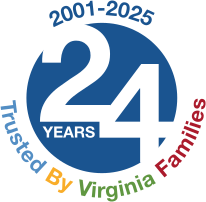What is ADA complementary paratransit?
The Americans with Disabilities Act (ADA) requires public transit agencies that provide fixed route service to provide “complementary paratransit” service to people with disabilities who cannot use the fixed route bus or rail service because of a disability. Many older adults qualify for service under the definition of disability. The ADA regulations specifically define a population of customers who are entitled to this service as a civil right.
Service Requirements
The regulations also define minimum service characteristics that must be met for this service to be considered equivalent to the fixed route service it is intended to complement. ADA complementary paratransit service must be provided within 3/4 of a mile of a bus route or rail station, at the same hours and days, for no more than twice the regular fixed route fare. Personal Care Attendants should not be charged a fare. Additionally, one individual, such as a family member or friend, not acting as a personal care attendant can be accommodated at the same fare as the eligible paratransit rider if space is available and will not result in a denial of service to other ADA paratransit eligible individuals.
While the transit agency is required to provide paratransit for trips with origins and destinations within 3/4 of a mile of a route/station, paratransit eligible customers who are outside the service area could still use the service if they are able to use get themselves into the service area. The ADA further requires that paratransit rides be provided to all eligible riders if requested any time the previous day. The ADA allows providers to negotiate trip times with the customer, but no more than an hour before or an hour after the requested time.
Eligibility
The ADA regulations provide guidance for paratransit eligibility. Individuals may be ADA paratransit eligible based on a permanent or temporary disability. If an individual meets the eligibility criteria for some trips but not others, they shall be eligible for only the trips for which they meet the criteria.
The eligibility determination process for ADA complementary paratransit is developed by the transit system in consultation with the local community. The eligibility process often requires the submission of an application, and may also require supporting documentation, an in-person interview and/or an in-person assessment of the applicant’s ability to use fixed route service. Some transit systems have more rigorous processes and strictly limit eligibility to those people who are functionally unable to ride fixed route service. Other transit systems have less restrictive eligibility, or may use the ADA paratransit application process to determine eligibility for other kinds of demand-responsive services, described below.
Other Demand Responsive Transportation Services
It is important to note that a community may offer other kinds of transportation services or in addition to, or instead of, the fixed route and ADA complementary paratransit services. Such services may be offered on a general public basis (for example, open to all people with disabilities, senior adults, and/or the general public), or may be limited to people who participate in specific social service programs. The service characteristics vary widely from community to community. Sometimes these services are provided in coordination with the ADA complementary paratransit. A customer may be eligible to use the ADA complementary paratransit for some trips, but find it necessary to use other demand-responsive services for other trips. For example, while the ADA complementary paratransit may only operate within 3/4 mile of the fixed route service, another service may be available outside that service area.
Resources
Title 49 of the Code of Federal Regulations, Part 37 Transportation, Subpart F Paratransit as a Complement to Fixed Route Service https://www.ecfr.gov/current/title-49/subtitle-A/part-37#subpart-F
Federal Transit Administration Circular 4710.1 Americans with Disabilities Act (ADA) Guidance, Chapter 8-Complementary Paratransit Service https://www.transit.dot.gov/regulations-and-guidance/civil-rights-ada/part-37-transportation-services-individuals-disabilities#subpartF
